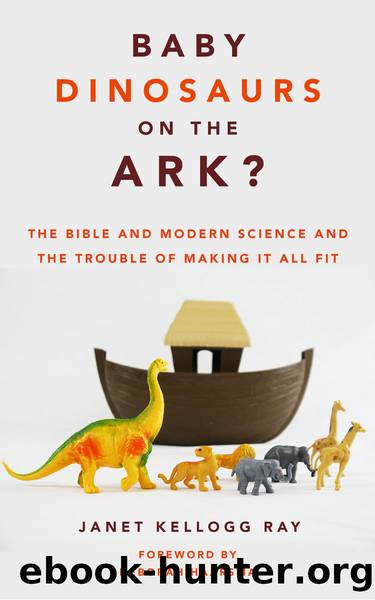Baby Dinosaurs on the Ark? by Ray Janet Kellogg;Haarsma Deborah;

Author:Ray, Janet Kellogg;Haarsma, Deborah;
Language: eng
Format: epub
Publisher: Wm. B. Eerdmans Publishing Co.
Published: 2021-05-15T00:00:00+00:00
8
Written in Stone
William Smith was born into humble circumstances, orphaned as a boy, and then sent to live on his uncleâs farm in Oxfordshire, England. His uncle was amused by his little nephewâs love of rock collecting, especially the small clam-shaped rocks William and his buddies used as marbles. William also loved to collect âpound-stones,â1 large rocks that looked like spikeless sea urchins and were often used to balance butter scales. No doubt about it, William Smith was a fossil enthusiast from boyhood.
Smith was a nineteenth-century working-class man with limited formal education. He worked as a surveyorâs assistant and eventually as an engineer building roads and canals, always observing the rock layers exposed by excavations. Smith never lost his childhood fascination with fossils. Over and over again, Smith noticed that fossils were always found in sedimentary rock and certain fossils were always found in the same layer, or âstrataâ of rock. Amazingly, the order of fossils was always the same, no matter where he looked. From the bottom layers to the top layers, Williams could always predict which fossils he would find.
Wherever Smith examined rock layers, the succession of fossils was consistent. In 1815, Smith published a groundbreaking geological map of England and Wales, Strata Identified by Organized Fossils, followed by two more publications about fossils across England. Smith moved fossil collecting from a mere Victorian curiosity hobby to a real life, practical application in technology. Smithâs âfaunal successionââspecific fossils only occur in certain layers of rockâlaid the foundation for modern oil and gas exploration.
William Smith and two fellow fossil-enthusiast friends, both clergymen, named over twenty-three rock strata along with the fossils they held. Smith was a man of faith, but he made no attempt to hide the facts of his discoveries or make them fit a biblical timeline. The facts were simply what they were. For Smith, fossils were insight into Godâs creative process: God must have created life in a manner that was progressively complex.2
Download
This site does not store any files on its server. We only index and link to content provided by other sites. Please contact the content providers to delete copyright contents if any and email us, we'll remove relevant links or contents immediately.
Signature in the Cell: DNA and the Evidence for Intelligent Design by Stephen C. Meyer(3070)
The Secret Power of Speaking God's Word by Joyce Meyer(2968)
Real Sex by Lauren F. Winner(2966)
The Holy Spirit by Billy Graham(2892)
The Gnostic Gospels by Pagels Elaine(2468)
Jesus by Paul Johnson(2309)
Devil, The by Almond Philip C(2279)
23:27 by H. L. Roberts(2195)
The Nativity by Geza Vermes(2178)
Chosen by God by R. C. Sproul(2122)
All Things New by John Eldredge(2102)
Angels of God: The Bible, the Church and the Heavenly Hosts by Mike Aquilina(1932)
The Return of the Gods by Erich von Daniken(1894)
Angels by Billy Graham(1886)
Knowing God by J.I. Packer(1804)
Jesus of Nazareth by Joseph Ratzinger(1766)
Evidence of the Afterlife by Jeffrey Long(1744)
The Gnostic Gospel of St. Thomas by Tau Malachi(1736)
How To Be Born Again by Billy Graham(1730)
